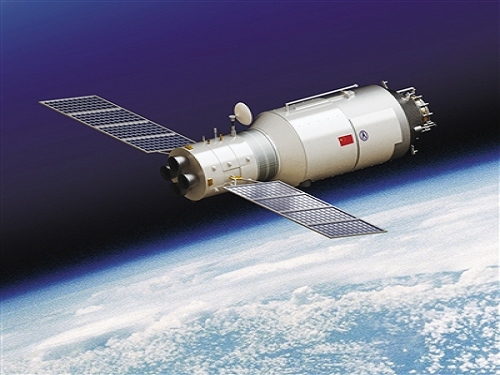Tiangong No. 1 used domestic textiles
 At 21:16 on September 29, after more than two years of preparation, the Long March II F launch vehicle equipped with the Tiangong-1 target aircraft was launched successfully in Jiuquan and will begin its first space rendezvous and docking mission in China. Open a new phase of China's lunar exploration project.
At 21:16 on September 29, after more than two years of preparation, the Long March II F launch vehicle equipped with the Tiangong-1 target aircraft was launched successfully in Jiuquan and will begin its first space rendezvous and docking mission in China. Open a new phase of China's lunar exploration project. With the successful launch of “Tiangong Iâ€, its mysterious veil was also unveiled. To power the aircraft, the solar battery wing, which is more than 3 meters long and 13.6 meters longer than the "Tiangong I", attracts attention. It is understood that according to the current trend of aerospace development, especially the development of space stations, the demand for energy consumption, especially electrical energy, is increasing. The construction of powerful, lightweight solar cell wings is the key to ensuring the electrical space requirements of the International Space Station. In the past, solar cell wings were mostly made of aluminum alloy. Due to their large weight, low power generation, susceptibility to oxidation, and short life span, they were not suitable for providing energy for space stations and low-orbiting satellites. They had been eliminated in many countries and developed a new generation of semi-rigid solar energy. Battery Wings has become one of the topics for China’s space industry.
With the support of the State and Shanghai Municipal Science and Technology Commission, Prof. Chen Nanliang of the Donghua University tasked with the development task of the “High-Temperature Semi-rigid Solar Cell Wing Glass Fiber Mesh Material†of the “Tian Gong 1†Power Subsystem. His team since 2004 and Quanzhou Haitian Material Technology Co., Ltd., established the Tung Wah Group of Haitian industrial test engineering research center with the Ministry of Education in the textile base, after a lot of experiments to overcome many technical difficulties, finally completed the major national Scientific and technological research projects, products through the ground space mechanical properties test, fully meet the design requirements.
According to Professor Chen, the "Tiangong-1" power subsystem is the first application of "carbon fiber frame structure + glass fiber mesh weaving technology" to solar cell wings in China's spacecraft. Glass fiber grid is one of the core technologies. The semi-rigid cell substrate glass fiber mesh material is a high-density warp knit fabric produced by warp knitting process using glass fiber as a raw material. The key technologies include: research on high-softness fiberglass materials and infiltration agents, research and characterization of glass fiber weaving performance, research on high-strength glass fiber warping technology and equipment, research on high-strength glass fiber warp knitting machine forming circle theory and equipment, and high Weaving feasibility study of density high-quality glass fiber warp knit fabrics, uniformity of mechanical properties in warp-knitted mesh planes, and optimization control of production processes.
"This technology is currently only controlled by Russia, but they are not sold to us. However, the Chinese people are fully capable of self-reliance and mastering the core technology of the space station," said Professor Chen.
Leather Watch,Leather Watch Wholesale,Best Leather Watch
Kooxus Jewelry Factory , http://www.zjpageantcrown.com